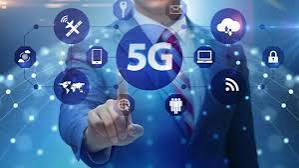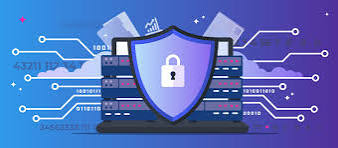
5G network security concerns
5G technology promises ultra-fast connectivity and innovation but also introduces complex security challenges. With billions of IoT devices, virtualized infrastructure, and global supply chains, the risk of cyberattacks, espionage, and data breaches rises significantly. Strong encryption, zero-trust models, and international cooperation are key to mitigating threats. Both
✨ Raghav Jain

Introduction
The rollout of 5G technology marks a revolutionary step in global connectivity. Promising lightning-fast internet speeds, ultra-low latency, and the ability to connect billions of devices simultaneously, 5G will power everything from smart homes and autonomous cars to telemedicine and industrial automation. However, this leap forward also comes with new security challenges.
Unlike its predecessors, 5G is not just an upgrade in speed; it is an entire digital ecosystem with decentralized architecture, heavy reliance on software, and massive device connectivity. These features create vulnerabilities that hackers and cybercriminals can exploit. Understanding these security concerns is essential to protect individuals, businesses, and nations in the digital era.
In this article, we will explore the key 5G security concerns, their impact, real-world risks, and practical strategies to safeguard against them. The rollout of 5G technology is being hailed as one of the most transformative milestones in the history of telecommunications. Unlike previous generations of mobile networks, 5G promises not only higher data speeds but also ultra-low latency, massive device connectivity, and the ability to power emerging technologies such as autonomous vehicles, smart cities, advanced healthcare systems, and the Internet of Things (IoT). Its potential to reshape industries and human interactions is undeniable. However, along with the opportunities, 5G also brings unprecedented security challenges that could have far-reaching consequences if not addressed carefully. Understanding the security concerns associated with 5G networks is critical because they touch every aspect of digital life, from personal data protection to national security.
One of the foremost concerns with 5G is its complex infrastructure. Unlike 4G, which largely relied on centralized hardware-based systems, 5G uses a combination of hardware, software, virtualization, and cloud-based technologies. This shift to a software-driven architecture, while making the network more flexible and scalable, also increases the attack surface for cybercriminals. Virtualization and software-defined networking (SDN) open the possibility of configuration errors, malicious code injections, or vulnerabilities that hackers can exploit. Furthermore, the distributed nature of 5G, with small cells deployed extensively across cities, creates more entry points for potential intrusions. Each small cell becomes a possible weak spot that, if compromised, could give attackers access to larger segments of the network.
The expansion of the Internet of Things under 5G poses another significant challenge. With the ability to connect millions of devices per square kilometer, 5G will support a vast ecosystem of smart appliances, industrial sensors, medical devices, and connected vehicles. While this connectivity enhances efficiency and innovation, it also multiplies the risks. Many IoT devices are notoriously insecure due to weak authentication mechanisms, outdated firmware, or lack of encryption. A single vulnerable device could act as an entry point for a hacker to compromise a network or launch large-scale attacks such as Distributed Denial of Service (DDoS). Considering how 5G is expected to underpin critical services like traffic management systems or remote surgeries, the stakes of IoT insecurity are higher than ever.
Supply chain vulnerabilities are also a pressing issue in the 5G era. Building a 5G network requires components, hardware, and software sourced from various global vendors. If any component in the supply chain is compromised, it can create backdoors or malicious code that remain undetected until exploited. Concerns about foreign manufacturers and their potential influence over national telecommunications infrastructure highlight how 5G is not only a technological challenge but also a geopolitical one. Governments across the world have raised alarms about the risks of relying on untrusted vendors, and debates about supply chain security have become central to 5G deployment strategies.
Another concern stems from the sheer speed and bandwidth that 5G offers. While faster connections benefit users, they also benefit cybercriminals by allowing them to launch more rapid and damaging attacks. Malware can spread faster, data exfiltration can occur in larger volumes, and coordinated attacks can be executed with greater precision. This creates a scenario where existing cybersecurity measures may struggle to keep up with the speed of attacks in a 5G-enabled environment.
Privacy risks are closely linked to 5G security concerns. With its extensive connectivity, 5G will generate vast amounts of data about individuals, organizations, and infrastructure. Location tracking, behavioral patterns, health data, and financial information could all be collected and transmitted at higher rates. If not adequately protected, this data could be intercepted or misused, leading to severe privacy violations. For individuals, this may mean a loss of control over personal information, while for organizations, it could mean breaches of confidential data with financial and reputational damage. Governments, too, face the risk of mass surveillance and espionage if adversaries exploit 5G networks to gather intelligence.
Network slicing, one of the innovative features of 5G, further complicates the security landscape. This technology allows operators to create multiple virtual networks on a shared physical infrastructure, each tailored for specific use cases such as healthcare, automotive, or emergency services. While network slicing enables efficiency and customization, it also raises questions about isolation and security. If one slice is compromised, could it serve as a gateway to others? Ensuring strong isolation between slices is a technical challenge that requires rigorous oversight.
The role of artificial intelligence and automation in 5G management also raises concerns. AI-driven systems are being used to manage traffic, detect anomalies, and optimize performance in 5G networks. However, these systems themselves could be targeted by adversaries. Poisoning AI algorithms, feeding them false data, or manipulating automated responses could lead to network disruptions or mismanagement. Dependence on AI in a critical infrastructure environment introduces risks that are difficult to predict and mitigate.
National security implications of 5G cannot be overstated. Since 5G is expected to support critical infrastructure, from power grids to defense communication, any breach could have catastrophic consequences. A successful attack could disrupt essential services, cause economic damage, or even endanger human lives. This is why many nations are treating 5G deployment as a matter of national security rather than a mere technological upgrade. The potential for cyber warfare, espionage, and sabotage through 5G networks elevates the urgency of building robust defenses.
To address these concerns, a multi-layered approach is required. Strong encryption protocols, continuous monitoring, and regular software updates are essential to secure the system. Collaboration among governments, telecom operators, and technology vendors is critical to ensuring supply chain integrity and adherence to strict security standards. Public awareness about securing personal devices connected to 5G networks is equally important to minimize risks at the user level. Moreover, investing in cybersecurity research and workforce development will be key to staying ahead of evolving threats.
In conclusion, while 5G represents a groundbreaking leap in technology that promises faster speeds, greater connectivity, and transformative possibilities for industries, it also introduces a host of security concerns that cannot be ignored. From expanded attack surfaces and insecure IoT devices to supply chain risks, privacy issues, and national security threats, the vulnerabilities are complex and far-reaching. Balancing the immense benefits of 5G with robust security measures is not an option but a necessity. The future of digital trust, economic growth, and even societal stability will depend on how effectively the world addresses the security challenges of this revolutionary technology.
Understanding 5G and Why Security Matters
Before diving into threats, let’s understand what makes 5G different from 4G:
- Decentralized infrastructure: Unlike 4G’s centralized design, 5G uses distributed networks, increasing the attack surface.
- Network slicing: 5G allows separate "slices" of networks for different industries, but poor isolation could expose sensitive data.
- Massive IoT support: Billions of IoT devices can connect at once, making security management complex.
- Software-driven systems: More reliance on cloud and virtualization makes it vulnerable to software bugs and malicious attacks.
Security matters because 5G will control critical infrastructures—like healthcare, transportation, defense, and finance. A single breach could disrupt not just individuals but entire nations.
Major 5G Network Security Concerns
1. Expanded Attack Surface
With billions of IoT devices, sensors, and smart systems connected, hackers have countless entry points. A weak smart home device, for example, could become the gateway to attack larger systems.
2. Supply Chain Risks
5G infrastructure depends on global vendors for hardware and software. If equipment or firmware is compromised at the supply chain level, it could embed backdoors into the network, exposing users to espionage or sabotage.
3. Network Slicing Vulnerabilities
While slicing allows industries like healthcare or finance to have dedicated networks, a poorly configured slice could leak sensitive data into another. Hackers could exploit weak slices to move laterally across critical networks.
4. Cloud and Virtualization Threats
5G relies heavily on cloud computing, virtualization, and edge computing. Attacks on virtual machines, hypervisors, or cloud servers could cripple entire sections of the network.
5. IoT Device Insecurity
Most IoT devices lack strong security features. Many are shipped with default passwords or unpatched software. A hacked surveillance camera or wearable can be turned into a botnet to launch DDoS (Distributed Denial of Service) attacks.
6. Data Privacy Risks
5G transmits massive amounts of personal data in real-time—from medical information to location tracking. If intercepted or stolen, this data could be misused for identity theft, surveillance, or blackmail.
7. State-Sponsored Cyber Attacks
Nations are heavily invested in 5G infrastructure. Rival states may exploit vulnerabilities for cyber warfare, espionage, or critical infrastructure disruption.
8. Denial of Service Attacks
With ultra-low latency, 5G networks need real-time response. Even short disruptions can cause massive chaos in hospitals, autonomous vehicles, or smart grids if attackers flood networks with malicious traffic.
The Real-World Risks of 5G Security Flaws
- Healthcare: Hackers could access patient records, manipulate medical devices, or disrupt telemedicine.
- Autonomous Vehicles: A compromised 5G system could cause traffic accidents or even coordinated attacks.
- Smart Cities: Traffic lights, surveillance, and energy grids controlled via 5G could be paralyzed by hackers.
- Finance: Mobile banking and online transactions could be intercepted, leading to large-scale fraud.
- National Security: Critical communication channels used by defense or government agencies could be exploited for espionage.
Best Practices to Strengthen 5G Security
Daily Security Practices
- Regular Device Updates – Keep smartphones, IoT devices, and software updated with the latest patches.
- Strong Authentication – Use multi-factor authentication for accessing devices and applications.
- Encrypted Communication – Enable end-to-end encryption for calls, messages, and data transfers.
- Network Monitoring – Track unusual device activity to catch intrusions early.
- IoT Hygiene – Change default passwords, disable unnecessary features, and separate IoT devices on different networks.
Weekly/Organizational Security Practices
- Zero-Trust Model – Adopt “never trust, always verify” policies for all connected devices.
- Regular Penetration Testing – Simulate cyberattacks to identify vulnerabilities in 5G-enabled systems.
- Supply Chain Audits – Vet vendors, hardware, and software providers for hidden risks.
- AI-Powered Threat Detection – Use machine learning to detect anomalies across 5G networks.
- Data Privacy Compliance – Follow GDPR, HIPAA, and other regional data protection laws.
- Incident Response Planning – Prepare a cybersecurity emergency playbook for rapid action in case of breaches.
Common Myths About 5G Security: Busted!
“5G is secure by design, so no extra protection is needed.”
→ False! While 5G has built-in encryption, new features like slicing and IoT increase risks.
“Hackers only target big corporations, not individuals.”
→ Wrong. Hackers often exploit personal IoT devices to infiltrate larger systems.
“5G radiation causes health issues, not security risks.”
→ A common misconception. The real danger is cybersecurity, not radiation.
“VPNs are enough to secure 5G.”
→ Not true. VPNs help, but threats like IoT botnets and supply chain attacks require broader defense strategies.
“Only governments should worry about 5G security.”
→ False. From small businesses to individual users, everyone using 5G devices is exposed to risks.
Sample 5G Security Action Plan for Individuals and Businesses
Morning Routine:
- Check and install device updates
- Enable VPN when accessing public Wi-Fi
- Review security alerts from network providers
Midday Practices:
- Train employees on phishing and IoT security
- Monitor unusual data usage or device behavior
- Conduct quick vulnerability scans
Evening Practices:
- Backup important data securely
- Disconnect unused devices from the network
- Run AI/antivirus scans for hidden threats
Weekly Habits:
- Rotate passwords and authentication keys
- Audit IoT devices for firmware updates
- Test incident response readiness with mock drills
- Review logs for unusual login attempts or system errors
Conclusion
5G is the future of connectivity, enabling smart cities, faster healthcare, autonomous vehicles, and more. But with great power comes great responsibility—and significant security risks. From expanded attack surfaces and IoT vulnerabilities to supply chain threats and data privacy issues, 5G security concerns cannot be ignored.
The key to staying safe lies in proactive defense: regular updates, strong encryption, zero-trust models, and continuous monitoring. By combining daily security hygiene with advanced organizational practices, individuals and businesses can enjoy the benefits of 5G without falling victim to its dangers.
As we step into a hyperconnected future, 5G security is not just about technology—it’s about trust, safety, and resilience in the digital world.
Stay secure. Stay aware. Stay connected
Q&A Section
Q1:- What are the major security concerns associated with 5G networks?
Ans :- 5G networks increase risks due to larger attack surfaces, IoT device integration, and reliance on software-defined infrastructure, making them vulnerable to cyberattacks and espionage.
Q2:- How does the increased number of connected IoT devices in 5G affect security?
Ans :- Billions of IoT devices connected via 5G expand entry points for hackers, making it harder to monitor and secure each device effectively.
Q3:- Why is supply chain security a critical issue in 5G deployment?
Ans :- 5G relies on global hardware and software vendors; compromised components or malicious code can lead to large-scale vulnerabilities and backdoors.
Q4:- How can 5G’s reliance on virtualization and cloud increase risks?
Ans :- Virtualized functions and cloud-based systems, if not properly secured, may expose networks to data breaches, denial-of-service attacks, and insider threats.
Q5:- What role does encryption play in mitigating 5G network threats?
Ans :- Strong end-to-end encryption safeguards communications against interception, ensuring privacy and data security even on vulnerable network segments.
Q6:- How could 5G enable more sophisticated cyberattacks?
Ans :- High speed and low latency can be exploited to launch rapid, automated cyberattacks such as botnets, ransomware, or AI-driven malware.
Q7:- Why are nation-state attacks a growing concern with 5G?
Ans :- Governments may target 5G infrastructure for espionage, sabotage, or surveillance, turning telecom systems into geopolitical battlegrounds.
Q8:- How can Zero-Trust Architecture improve 5G security?
Ans :- By requiring continuous authentication and strict access controls, Zero-Trust reduces insider threats and prevents lateral movement within networks.
Q9:- What is the importance of international collaboration in 5G security?
Ans :- Shared frameworks, regulations, and threat intelligence across countries ensure consistent protection and reduce risks from global supply chains.
Q10:- How can telecom companies and users prepare for 5G security challenges?
Ans :- Companies must invest in robust cybersecurity practices, regular audits, AI-based monitoring, and employee training, while users should adopt secure devices and strong authentication.
Similar Articles
Find more relatable content in similar Articles

5G network security concerns..
5G technology promises ultra-.. Read More

The Role of Robotics in Streng..
Robotics plays a vital role i.. Read More

Blockchain security (DeFi, NFT..
Blockchain security is vital .. Read More

Rising Cyber Crimes: Latest T..
Cyber crimes are rapidly grow.. Read More
Explore Other Categories
Explore many different categories of articles ranging from Gadgets to Security
Smart Devices, Gear & Innovations
Discover in-depth reviews, hands-on experiences, and expert insights on the newest gadgets—from smartphones to smartwatches, headphones, wearables, and everything in between. Stay ahead with the latest in tech gear
Apps That Power Your World
Explore essential mobile and desktop applications across all platforms. From productivity boosters to creative tools, we cover updates, recommendations, and how-tos to make your digital life easier and more efficient.
Tomorrow's Technology, Today's Insights
Dive into the world of emerging technologies, AI breakthroughs, space tech, robotics, and innovations shaping the future. Stay informed on what's next in the evolution of science and technology.
Protecting You in a Digital Age
Learn how to secure your data, protect your privacy, and understand the latest in online threats. We break down complex cybersecurity topics into practical advice for everyday users and professionals alike.
© 2025 Copyrights by rTechnology. All Rights Reserved.